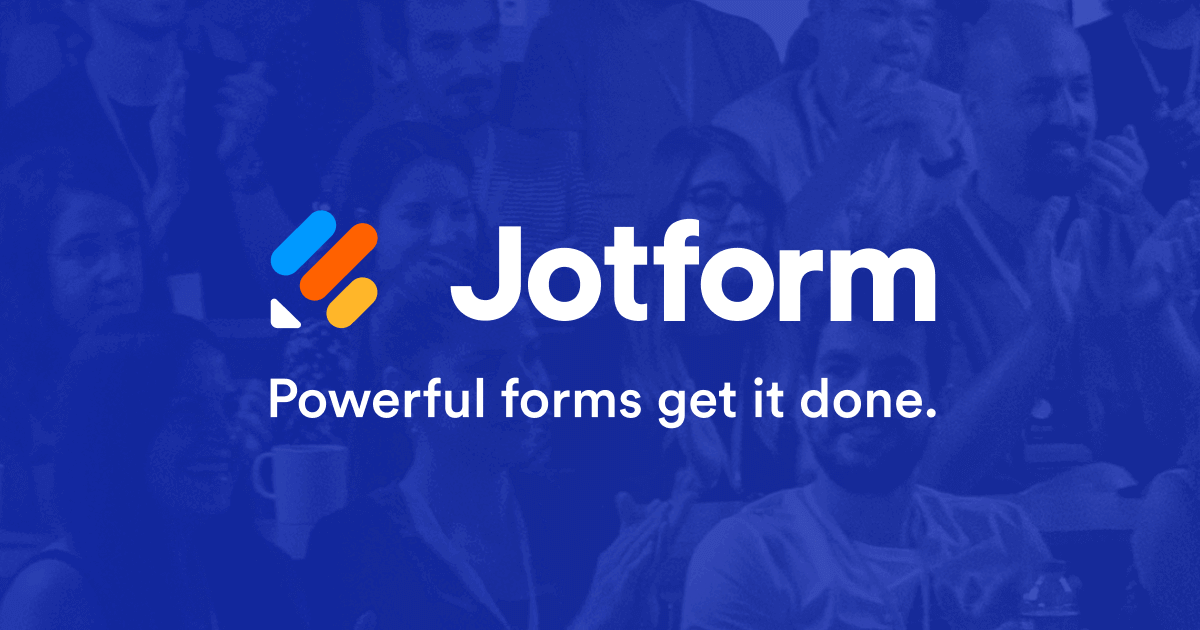
Key Takeaways
- AI refers back to the broader idea of machines simulating human intelligence; ML is a subset targeted on studying from information.
- AI consists of reasoning, decision-making, and language understanding; ML depends on algorithms to establish patterns and enhance over time.
- AI and ML drive innovation, scale back operational prices, and improve effectivity.
- Companies that perceive and combine AI and ML successfully will likely be higher positioned to innovate and develop.
- Instruments like Jotform AI Brokers mix NLP and ML to create dynamic, no-code customer-facing experiences.
Phrases like “machine studying” (ML) and “artificial intelligence” (AI) get tossed round so much — generally even interchangeably. However they’re not the identical factor. In the event you’re a enterprise proprietor, developer, or decision-maker, understanding the distinction may also help you make smarter decisions about leveraging these applied sciences.
At its core, AI is a broad idea involving machines designed to carry out duties that sometimes require human intelligence. Machine studying, alternatively, is a subset of AI that focuses on instructing computer systems to acknowledge patterns and make predictions primarily based on information — with out being explicitly programmed for each situation.
So, what else units them aside? And the way can they work collectively to drive innovation? Let’s break it down.
What’s synthetic intelligence?
AI refers to any know-how designed to imitate human intelligence. This consists of problem-solving, decision-making, language understanding, and even creativity. AI may be categorised into
- Slim AI: Designed for particular duties like voice assistants, fraud detection, or facial recognition.
- Normal AI: Theoretical AI that might assume, purpose, and be taught like people — one thing we haven’t achieved but.
From self-driving automobiles to advice engines, AI is already shaping the way in which we work together with know-how, automating complicated duties and bettering effectivity at scale.
What’s machine studying?
Machine studying is a department of AI that permits programs to be taught from information as a substitute of counting on fastened guidelines. It helps computer systems enhance efficiency over time by recognizing developments, making predictions, and refining their outputs. ML is utilized in
- Supervised studying: Coaching fashions with labeled information (e.g., spam filters).
- Unsupervised studying: Discovering patterns in unlabeled information (e.g., buyer segmentation).
- Reinforcement studying: Studying by trial and error (e.g., self-learning robots, sport AI).
ML powers most of the good applied sciences we use every day, whether or not it recommends the subsequent Netflix present or personalizes our on-line buying experiences.
Synthetic intelligence vs machine studying: What’s the distinction?
Machine studying is a key a part of synthetic intelligence, however the two aren’t interchangeable. AI is the broader idea — an effort to create programs that may mimic or surpass human intelligence in fixing issues, understanding language, and making choices. In the meantime, ML focuses on utilizing algorithms to acknowledge patterns in information and make predictions or automate duties.
Some of the important variations between AI and ML is how they deal with decision-making. AI can mix a number of approaches, together with ML, rule-based logic, and symbolic reasoning. ML, nonetheless, depends purely on statistical fashions and huge datasets. Meaning AI can exist with out ML, however ML virtually all the time falls below the AI umbrella. Moreover, ML relies upon closely on high-quality information to perform nicely, whereas AI programs can generally function with much less information by leveraging reasoning layers.
Take a customer service chatbot, for instance. It might use ML to refine responses over time however depend on predefined guidelines or a information base to deal with sure queries. Briefly, AI is about replicating intelligence in numerous methods, whereas ML is laser-focused on studying from information to enhance accuracy and automation.
Actual-world purposes of AI and ML
AI and ML energy a few of right now’s most progressive applied sciences, delivering actual worth to companies and customers.
AI in motion
- Digital assistants: Siri, Alexa, and Google Assistant course of pure language to reply questions and full duties.
- Self-driving automobiles: AI-powered autos analyze real-time information to navigate roads safely.
- Healthcare diagnostics: AI enhances medical imaging evaluation and assists in drug discovery.
- Monetary danger evaluation: AI models assist lenders consider creditworthiness and optimize lending choices.
- Sensible house automation: AI-driven gadgets like thermostats and voice-activated assistants be taught consumer habits to regulate settings mechanically.
Machine studying in motion
- Suggestion engines: Netflix, Amazon, and Spotify recommend content material primarily based on previous consumer habits.
- Fraud detection: Banks use ML to identify uncommon transaction patterns and stop fraud.
- Predictive upkeep: Producers analyze sensor information to anticipate tools failures earlier than they occur.
- Customized advertising and marketing: Companies use ML to phase clients and ship tailor-made adverts, bettering engagement and conversion charges.
On the finish of the day, AI and ML typically work collectively however they serve distinct functions. AI goals to simulate intelligence throughout numerous domains, whereas ML focuses on studying from information to enhance decision-making. Understanding these variations may also help you select the proper know-how in your wants.
Benefits of AI and ML
Each AI and ML supply transformative benefits throughout industries, although they excel in several domains. AI encompasses a broad spectrum of capabilities, enabling machines to simulate human intelligence, whereas ML focuses on data-driven studying and sample recognition. Their mixed potential drives automation, enhances decision-making, and accelerates innovation.
Key benefits of AI
- Advanced problem-solving: AI programs can course of huge quantities of information and apply subtle algorithms to resolve intricate issues. They permit extra exact and well timed decision-making, from diagnosing illnesses to detecting cybersecurity threats.
- Pure language processing (NLP): AI-driven programs, like chatbots and voice assistants (e.g., Siri, Alexa, and ChatGPT), enhance human-computer interactions by language understanding, speech recognition, and translation.
- Strategic decision-making: AI can consider a number of variables concurrently, offering insights for enterprise technique, monetary investments, and even disaster administration. AI-powered simulations may also optimize logistics, city planning, and navy operations.
- Automation and effectivity: AI reduces the necessity for human intervention in repetitive duties, enhancing productiveness throughout manufacturing, customer service, and administrative workflows.
Key benefits of ML
- Sample recognition and predictive analytics: ML identifies hidden patterns inside giant datasets, serving to organizations forecast market developments, detect fraud, and anticipate client habits.
- Steady studying and adaptation: ML fashions refine their accuracy by constantly processing new information, making them invaluable in purposes like customized suggestions (e.g., Netflix and Amazon), inventory market predictions, and danger evaluation.
- Anomaly detection: ML algorithms are adept at detecting deviations from regular patterns, which is essential in cybersecurity, medical imaging, and high quality management in manufacturing.
- Scalability and customization: ML-driven programs scale effectively, permitting companies to customise consumer experiences (e.g., customized advertising and marketing campaigns and customer support automation).
The advantages of utilizing each applied sciences
When used collectively, AI and ML unlock much more important potential. With AI’s reasoning and decision-making capabilities and the way in which that ML learns from information, this mix allows companies and industries to
- Cut back operational prices by automating guide duties.
- Increase effectivity by streamlining workflows and optimizing sources.
- Drive innovation by discovering new potentialities in fields corresponding to drug discovery, monetary forecasting, and good metropolis growth.
Challenges and limitations of machine studying vs AI
Regardless of their immense advantages, AI and ML face a number of challenges that affect their effectiveness, adoption, and moral issues.
Challenges in AI growth
- Excessive prices and computational sources: Creating and deploying AI programs requires substantial funding in high-performance computing, specialised {hardware} (e.g., graphics processing models and tensor processing models), and cloud-based infrastructures.
- Moral and bias considerations: AI fashions can unintentionally perpetuate biases current in coaching information, resulting in unfair outcomes in areas like hiring, lending, and regulation enforcement. Addressing AI bias requires transparency and accountable AI governance.
- Lack of explainability (black field downside): Many AI programs, particularly deep studying fashions, function as “black boxes,” making it obscure how they arrive at particular choices. This lack of transparency hinders belief and regulatory compliance.
- Regulatory and authorized challenges: Governments and organizations battle to create moral frameworks that guarantee AI operates inside acceptable boundaries. Compliance with information privateness legal guidelines (e.g., the Normal Knowledge Safety Regulation and the California Client Privateness Act) stays a key problem.
Challenges in ML implementation
- Knowledge dependency and high quality points: ML fashions rely closely on huge datasets. The ensuing fashions could produce inaccurate or deceptive predictions if information is inadequate, biased, or poorly labeled.
- Overfitting and underfitting: ML fashions could both overfit (memorize coaching information with out generalizing) or underfit (fail to seize patterns), affecting their real-world efficiency.
- Vulnerability to adversarial assaults: Malicious actors can manipulate ML fashions by introducing deceptive inputs, inflicting incorrect classifications. This can be a important difficulty in cybersecurity and fraud detection.
- Steady monitoring and upkeep: ML fashions require ongoing retraining to adapt to altering environments. With out common updates, fashions can turn into out of date or lose accuracy over time.
Addressing these challenges
To maximise the advantages of AI and ML whereas mitigating dangers, organizations should implement
- Sturdy information governance: Guaranteeing information integrity, range, and moral sourcing to cut back biases.
- Explainable AI (XAI): Enhancing transparency by interpretability methods to construct belief in AI choices.
- Cybersecurity measures: Defending AI and ML programs from adversarial assaults and unauthorized entry.
- Regulatory compliance: Adhering to evolving AI governance frameworks to align with moral and authorized requirements.
How AI and ML work collectively
AI and ML steadily converge in options that demand subtle decision-making, adaptability, and data-driven perception. Take, for instance, autonomous autos: These programs depend on AI for total navigation logic and sensor integration, whereas ML fashions course of real-time digital camera feeds, figuring out objects corresponding to pedestrians, lane markings, and visitors indicators. NLP instruments merge AI frameworks with ML algorithms to interpret and generate human language, unlocking capabilities like automated translations, sentiment evaluation, and chatbots. ML uncovers patterns from huge datasets in superior analytics, whereas AI orchestrates how these insights inform choices throughout a number of domains.
Jotform AI Agents exemplify this synergy. Leveraging superior NLP, these brokers perceive and reply to buyer inputs, whereas machine studying capabilities enable them to refine their interactions over time.
By deploying Jotform’s AI-powered tools, you may collect data way more effectively and engagingly by reworking your kinds into dynamic, conversational experiences. Start from scratch or select from a template (Jotform gives over 7,000 AI Agent templates, making it simple to get began shortly), then practice your AI together with your information by paperwork or URLs. This allows them to ask related questions and successfully handle buyer queries. As soon as full, customise your agent utilizing the Agent Builder. Easy.
Better of all, you don’t want to put in writing a single line of code.
Future developments and improvements in AI and ML
As AI and ML evolve, new breakthroughs will push the boundaries of what’s potential:
- XAI is making AI decision-making extra clear, which is essential for industries like healthcare and finance that depend on accountability and belief.
- Federated studying permits ML fashions to coach on decentralized information sources with out compromising consumer privateness. On this means, it gives large-scale insights whereas assembly regulatory necessities.
- Generative AI, like generative pre-trained transformer (GPT) fashions, is revolutionizing content material creation, coding, and design with automated textual content technology, picture manufacturing, and video modifying.
- AI-powered robotics are advancing automation in industries like manufacturing, logistics, and even surgical procedure, bettering precision and effectivity.
Staying forward of those developments is essential for companies seeking to keep a aggressive edge. In line with a Grand View Analysis report, the worldwide AI market is projected to succeed in $1.81 trillion by 2030 — a testomony to the rising affect of those applied sciences. As ML methods advance and AI turns into extra adaptive, the road between them will proceed to blur, driving groundbreaking improvements that form the way forward for digital experiences.
Whether or not you’re streamlining information assortment or growing predictive fashions, AI and ML are reworking our work. To start out seeing what these instruments are able to reaching in your group, give Jotform AI Agents a try for free today.
Picture by: peoplecreations
Source link











![[Bombshell News] Consultants say we’re DANGEROUSLY near a recession 🚨 [Bombshell News] Consultants say we’re DANGEROUSLY near a recession 🚨](https://i.ytimg.com/vi/DvnKvkjdsMc/maxresdefault.jpg)

